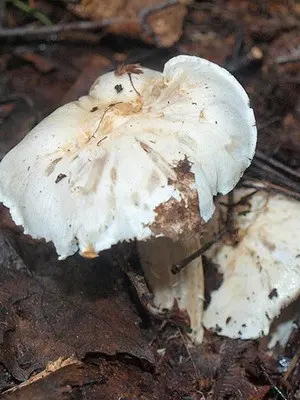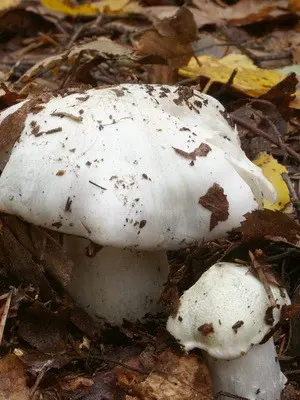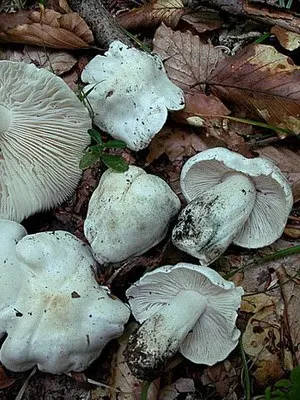The Ryadovkovye family has more than 100 types of fruiting bodies. Pigeon rowing (bluish) is an edible agaric mushroom belonging to this family. It is quite rare, therefore it is valued mainly among those mushroom pickers who are well acquainted with it.
Below is a detailed description and photo of a pigeon row, helping novice mushroom pickers to get acquainted with its appearance and other characteristic features.
Description of the pigeon row and differences from the white variety
Latin name: Tricholoma columbetta.
Family: Ordinary.
Synonyms: bluish row.
[ »»]
Hat: hemispherical or bell-shaped, fleshy, in diameter can reach up to 12 cm. As they grow older, the cap opens and becomes flat, and its edges bend down. In the center, you can often see a small tubercle. The surface is sticky, in young specimens it is radially fibrous with the presence of light scales. The color of the cap is white, sometimes with pinkish or bluish spots.
Leg: height up to 10 cm, thickness up to 3 cm, rounded, even or tapering downwards. The surface is silky, smooth, fibrous, dense inside. The color of the stem of the bluish row is white, and a light bluish-green tint is noticeable at the base.
Pulp: elastic, dense, fleshy, white color. The smell and taste are pleasant, but barely perceptible. Upon contact with air, the pulp of the fungus acquires a pink tint, and under the influence of high temperature it becomes red.
Records: free, wide, frequent, white at a young age, and with time acquire a reddish-brown color.
Edibility: edible mushroom.
Application: suitable for preparing various dishes and preparations for the winter. Pigeon row is good in soups and sauces. It perfectly decorates the festive table in the form of a pickled or salty snack. The fruit body is also dried for long-term storage. Many experienced mushroom pickers note that this mushroom gives a unique flavor to meat dishes. However, before cooking, it must be soaked in cold water, and then boiled for at least 15 minutes. Both young and adult specimens are used for food. In addition, even those fruiting bodies that have survived the first frosts are suitable for processing. Such taste qualities encourage novice lovers of “quiet hunting” to certainly study the description and photo of the pigeon row mushroom, so as not to lose sight of it in the forest.


Similarities and differences: this species is similar to the white row (Tricholoma album) – a dangerous poisonous mushroom. However, the differences between the pigeon row and the white variety are quite easy to notice. A sharp disgusting smell emanates from the latter, which helps to determine the edibility of the mushroom.
Spread: the bluish row is a fairly rare species in its family. The mushroom grows mainly in mixed and deciduous forests. Most often it can be seen near birches and oaks. Sometimes it can settle in pastures and meadows. It grows singly or in small groups from August to September.
We offer you to look at a few more photos of the pigeon row, allowing you to consider its appearance in more detail:


Remember that for any mushroom picker the rule “if you’re not sure – don’t take it!” applies. Otherwise, you can endanger your health and even life. For those who are just starting the path of a mushroom picker, we advise you to take experienced colleagues with you into the forest or limit yourself to more familiar and recognizable types of fruiting bodies.









